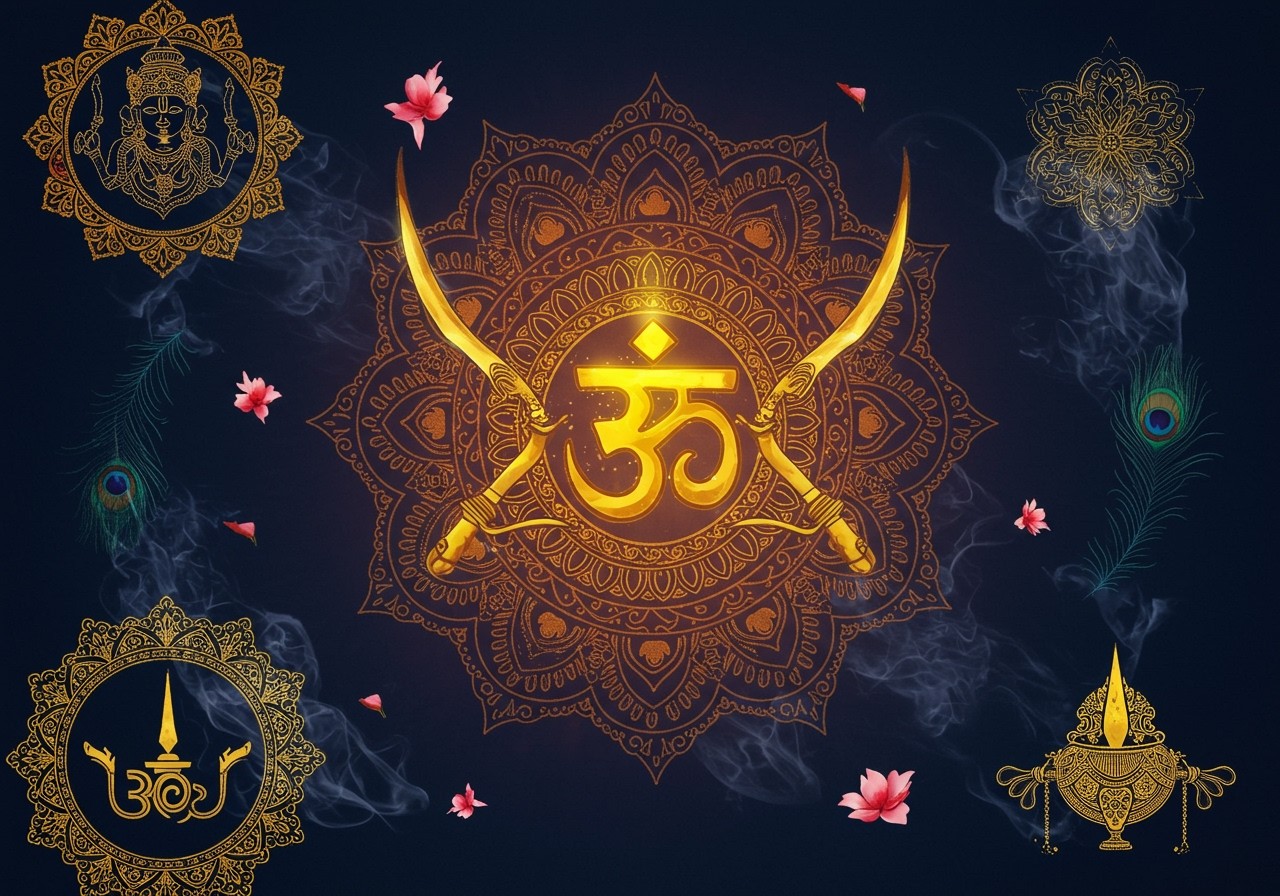
The Khanda symbol holds immense importance in Sikh culture, beautifully blending the concepts of unity, strength, and divine wisdom. This emblem, deeply rooted in history and spirituality, transcends geographical boundaries. By exploring its meanings across cultures and languages, we gain a deeper appreciation for its role in tradition and identity. Let’s delve into the profound symbolism of the Khanda, understanding its significance in various cultural contexts.
Understanding Khanda in Punjabi
In Punjabi, the Khanda is a central element of Sikh iconography. It represents the powerful concepts of Miri and Piri, symbolizing both worldly and spiritual authority. This dual nature emphasizes the core Sikh values of justice, equality, and the balance between one’s responsibilities in the temporal world and the spiritual journey. Historically, the Khanda’s origins trace back to the teachings of Guru Hargobind, further solidifying its importance. It features prominently on the Nishan Sahib, the revered Sikh flag, marking its significance in religious practices and ceremonies. The Khanda serves as a powerful reminder of Sikh ethos and heritage within Sikh institutions and for individuals.
At poojn.in, we understand the deep significance of the Khanda in Punjabi culture. That’s why we offer a wide selection of Khanda-related items, like meticulously crafted Khanda pendants and intricately designed wall hangings, to help you connect with your heritage. Discover more about sacred symbols.
Khanda in English: A Symbol of Balance and Justice
In English, the Khanda’s meaning resonates with the concept of balance between the spiritual and worldly realms. At its heart, the symbol embodies peace and justice, transcending its religious origins to hold meaning for diverse communities. In various Western contexts, the Khanda is embraced as a symbol of unity, strength, and the pursuit of truth. Its presence extends beyond religious communities, often adopted by those who resonate with its powerful message of balance and justice.
The Khanda’s visual representation is a powerful narrative in itself. The double-edged sword, the circle, and the two curved swords each contribute to a harmonious whole, conveying a sense of balance, truth, and equality. Its design elements become a language, speaking of divine knowledge and the pursuit of justice. From architecture and art to even fashion, the Khanda finds a place, enriching diverse forms of expression with its profound symbolism.
In contemporary culture, the Khanda has become a symbol of cultural pride for Sikh communities worldwide, connecting them to their rich heritage. However, the commercialization of such a sacred symbol presents challenges, making it essential to understand and respect its traditional significance. By appreciating its depth, we help preserve its sanctity and ensure its continued power as a symbol of unity and justice.
Khanda in Hindi: Cultural Context and Interpretation
In Hindi, the Khanda’s interpretation adds another layer of understanding to this powerful symbol. While deeply rooted in Sikhism, it also resonates within Hindu culture, reflecting shared values such as justice and dharma. This intersection reveals historical ties and common ground between Sikh and Hindu communities, further enriching the symbol’s meaning. The Khanda’s presence in festivals and celebrations serves as a bridge, highlighting unity in diversity—a cherished value in Indian culture.
Symbolism and Design of the Khanda
The Khanda’s design elements are rich with symbolic meaning, reflecting core Sikh beliefs. The central double-edged sword represents divine knowledge, its sharp edges symbolizing the separation of truth from falsehood, cutting through illusion and ignorance. It signifies the dismantling of false pride, vanity, and societal barriers like caste inequalities, promoting a sense of unity and equality. The surrounding circle, known as the Chakkar, embodies the eternal nature of God, without beginning or end, and the unity of all humankind. It represents oneness, justice, humanity, and morality, reflecting the all-encompassing nature of the divine. The two curved swords, the Kirpans, flank the Chakkar and symbolize the concepts of Miri and Peeri – temporal and spiritual authority, respectively. They represent the balance a Sikh must maintain between worldly duties and spiritual values, emphasizing the importance of both aspects of life.
Looking for authentic Khanda symbols for your home or personal use? Explore our exquisite collection of brass idols, meticulously crafted to honor tradition.
Khanda in Modern Culture
Today, the Khanda is visible in various forms of expression, from fashion and media to art and jewelry, reflecting a growing sense of cultural pride. For Sikhs worldwide, it represents a connection to their rich heritage and serves as a powerful symbol of identity. However, the increasing commercialization of the Khanda presents a challenge to maintaining its sacredness. Continuous efforts are needed to raise awareness about the Khanda’s cultural importance, ensuring it remains a beacon of unity and justice for all.
At poojn.in, we offer a range of resources to deepen your understanding of the Khanda and its significance. Learn more about Hindu philosophy and its connections to this powerful symbol.
Embracing the Khanda: A Symbol of Unity and Respect
In conclusion, the Khanda stands as a timeless symbol, seamlessly weaving tradition with modernity. It bridges cultures and embodies unity, justice, and spiritual wisdom. Its presence in various forms, from art and architecture to personal expressions of faith, captivates hearts with its deep meanings and beautiful design. By understanding and respecting the Khanda’s profound significance, we help preserve its sacredness. This symbol continues to inspire Sikh communities and those who admire its message worldwide, serving as a reminder of universal values: truth, equality, and harmony. Embracing the Khanda means celebrating our shared heritage, fostering respect, and nurturing a spirit of unity that transcends cultures.


